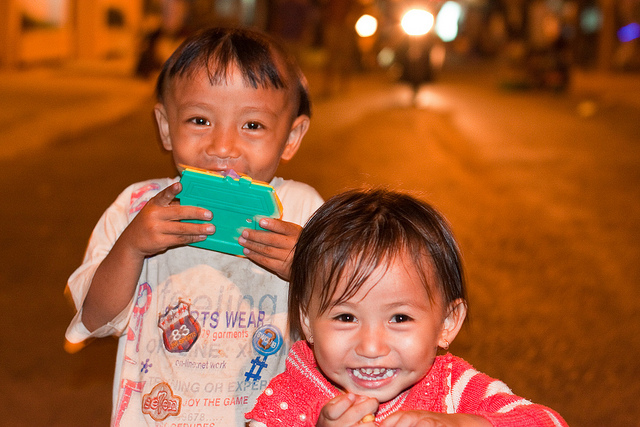Are you more likely to be happy living in Vietnam than in Switzerland, Norway, the U.S. and even Bhutan (the only country to measure “gross national happiness“)?
That’s what the results of this year’s Happy Planet Index (HPI) suggest. Designed by the New Economics Foundation (motto: “economics as if people and the planet mattered”), the HPI sets forth to be the “leading global measure of sustainable, well-being.” It ranks countries on how well they create the conditions for citizens to live long, happy, sustainable lives using three primary indicators: life expectancy, experienced well-being and Ecological footprint.
Based on these metrics, Vietnam came in at a perplexing 2nd out of 151 countries. In other words, Vietnam is the second happiest country in the world, according to the HPI.
Rounding out the top 10 are Costa Rica (at number 1), Colombia, Belize, El Savador, Jamaica, Panama, Nicaragua, Venezuela and Guatemala. Bangladesh just misses the top slots at number 11.
Why are we more perplexed than impressed? While the top 11 countries have all been lauded as models of development at some point, and while most are heavyweight tourist magnets, they are not exactly known as glowing bastions of happiness. Many of them suffer from high levels of inequality. Gang violence, though much improved, has been a major concern for many of the Latin American countries. Colombia is still dealing with decades of a protracted armed conflict, and Bangladesh has entered into another stage of political turmoil. Meanwhile, countries that ranked highly in the World Happiness Report by Columbia University’s Earth Institute did relatively poorly in the Happy Planet Index. See below:
Note: While the Happy Planet Index includes 151 countries, the World Happiness Report includes 156.
We’re not saying that one ranking system is better than the other; both rankings base their data from similar sources, including the UN and Gallup Polls. But it does give us pause to see Vietnam ranked so highly in the HPI when we know worries of inflation, underemployment and sluggish economic growth weigh heavy on the minds of many. Perhaps the HPI is better considered a reflection of the overall level of optimism of Vietnamese people and their belief in their ability to advance their lives, rather than an expression of contentment with their current living situations. If anything, the HPI does well to subvert expectations and make us question what “model happiness” is, if such a thing exists. Is it a Scandinavian climate and a GDP per capita of $40,200? Or is it sunny beaches along a 1290 km coastline and a life expectancy of 79.1 years?
Note: Bhutan, sometimes dubbed the happiest country in the world, is not included in either rankings due to a lack of available data. A case study on Bhutan, however, is presented in the World Happiness Report.
Image by GijsBudel via Flickr (Creative Commons)





